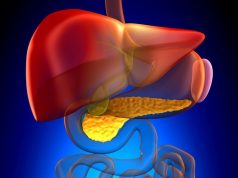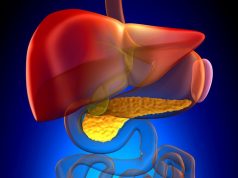Researchers outline pluses, minuses of various surgical approaches
THURSDAY, July 23, 2015 (HealthDay News) — In a new review, experts compare the pros and cons of several surgical methods for the management of gallbladder disease. The report was published in the July 23 issue of the New England Journal of Medicine.
Todd Baron, M.D., a professor of gastroenterology at the University of North Carolina School of Medicine in Chapel Hill, and colleagues reviewed several different interventional approaches to gallbladder disease.
The authors write that a newer technique, called natural orifice transluminal endoscopic surgery, requires no incision, but depends on special equipment and is technically difficult, which means it’s available only at a few medical centers. The gallbladder is reached using an endoscope that’s inserted into the body through a natural opening such as the mouth, vagina, or anus.
Another option — for patients who don’t qualify for the laparoscopic approach — is called percutaneous cholecystostomy. In this procedure, a catheter is placed through the abdominal wall directly into the gallbladder. Baron and his colleagues say this approach is effective in 90 percent of patients with a severe inflammation of the gallbladder, but the external drainage tubes can be uncomfortable.
Finally, the most recent approach involves draining bile directly into the patient’s gastrointestinal tract, where it can also aid in digestion. The bile can be directed this way through endoscopic procedures that use one of two routes (transmural and transpapillary), the researchers said.
Several authors disclosed financial ties to the medical device industry.
Full Text (subscription or payment may be required)
Copyright © 2015 HealthDay. All rights reserved.








